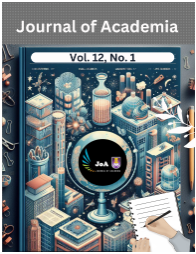INVESTIGATING STUDENTS’ PREFERENCES BETWEEN ONLINE LEARNING AND FACE-TO-FACE LEARNING: A STUDY FROM UiTM SEREMBAN CAMPUS
Keywords:
face-to-face learning, online learning, students’ preferences, higher educationAbstract
COVID-19, short for "Coronavirus Disease 2019," has rapidly spread across the globe, resulting in a global pandemic. The COVID-19 pandemic has a profound impact on social, economic and health worldwide including in the field of education. Educational institutions including colleges and universities have faced significant disruptions and challenges due to the pandemic. Many higher education institutions temporarily closed their campuses, disrupting traditional classroom-based learning, which relied heavily on face-to-face interactions to provide educational information. With this closure, there has been a rapid shift towards remote learning or online education to ensure the safety of students, faculty and staff. Lecturers have adopted various online platforms and virtual learning tools to deliver lectures, facilitate discussions and conduct assessments. This transition presented various challenges including digital inequality, lack of interaction, heavy workloads and distractions at home. The objectives of this study are to investigate students’ preferences between two methods of learning which are online learning and face-to-face learning. It will also examine the students’ perspective relating to the advantages and disadvantages of online learning as compared to face-to-face learning. Additionally, the study also seeks to identify the students’ learning effort during online learning session. The study found that the majority of the students preferred online learning as their learning method due to its advantages in terms of flexibility and accessibility. Nonetheless, there are some drawbacks to online learning for students such as technical difficulties with internet connection and a lack of engagement. Furthermore, the efforts made by students in the learning process during an online session are equal to those made during face-to-face learning. Thus, the findings of this study could help educational institutions, lecturers and related party to improve their teaching and learning method in delivering educational contents by taking into consideration various factors including students’ preferences.
References
Ab Latif, R., & Ismail, W. I. (2021). Open and Distance Learning (ODL) During COVID-19: Challenges and Obstacles Among Nursing Students. International Journal of e-Learning and Higher Education (IJELHE), 16(1), 87-98.
Ag-Ahmad, N. (2020). Open and Distance Learning (ODL): Preferences, Issues and Challenges Amidst Covid-19 Pandemic. Creative Practices in Language Learning and Teaching (CPLT), 8(2), 1-14.
Amir, A. F., & Borhan, R. (2022). Students’ Perception and Preference Towards Open and Distance Learning (ODL) During Covid-19 Pandemic: A Case Study of Studio-Based Learning. Malaysian Journal of Sustainable Environment, 9(1), 285-302.
Top Hat. Face-to-Face Learning. https://tophat.com/glossary/f/face-to-face-learning/?fbclid=IwAR2. [Access online 13 August 2023].
Garcia, P.G. & Cruz, L.N. (2022). Transitioning to Online and Flexible Modes of Delivery: Challenges and Opportunities During and Beyond the COVID-19 Pandemic in the Philippines. ASEAN Journal of Open and Distance Learning, 13(2), 1-10.
Gherhes, V. & Stoian, C.E. & Farcasiu, M.A. & Stanici, M. (2021). E-Learning vs. Face-to-Face Learning: Analyzing Students’ Preferences and Behaviors. Sustainability 13(2), 1-15.
Huang, R. H., Liu, D. J., Tlili, A., Yang, J. F., Wang, H.H., et al. (2020). Handbook on Facilitating Flexible Learning During Educational Disruption: The Chinese Experience in Maintaining Undisrupted Learning in COVID-19 Outbreak. Smart Learning Institute of Beijing Normal University. https://iite.unesco.org/wp-content/uploads/2020/03/Handbook-on-Facilitating-Flexible-Learning-in-COVID-19-Outbreak-SLIBNU-V1.2-20200315.pdf.
Li, D. (2022). The Shift to Online Classes During the Covid-19 Pandemic: Benefits, Challenges, and Required Improvements from the Students’ Perspective. The Electronic Journal of e-Learning, 20(1), 1-18.
Mohammad, S. N., Yusof, M. K. T. M., Puaad, M. B. F. M., Jamal, M. H., & Wee, L. S. (2023). Investigating Students’ Perception and Preferences of Online Learning in UiTM Pasir Gudang Campus. Asian Journal of University Education, 19(1), 223-234.
Mohd Yunus, S. Y., Noradzan, H., Wan Ghani, W. A., & Mohd Isnani, Z. (2021). A Comparison Between Face-To-Face and ODL Implementations in Increasing Computer Hands-On Skills and Social Competence Among UiTM Campus Seremban Students. https://ir.uitm.edu.my/54072/1/54072.pdf. [Access online 3 August 2023].
Prasetyo, Y., Irvan Sir, & Atmam Amir. (2022). Face-to-Face Learning Methods Are Limited in Overcoming Students’ Learning Difficulties During the Pandemic Covid-19. ETDC: Indonesian Journal of Research and Educational Review, 1(3), 286-296.
United Nations. Quality Education. https://www.un.org/sustainabledevelopment/education/. [Access online 2 August 2023].
Schleicher, A. (2020). The Impact Of COVID-19 On Education: Insights from Education at a Glance 2020. https://www.oecd.org/education/the-impact-of-covid-19-on-education-insights-education-at-a-glance-2020.pdf. [Access online 2 August 2023].
Simkus, J. (2023). Convenience Sampling: Definition, Method and Examples. https://www.simplypsychology.org/convenience-sampling.html. [Access online 2 August 2023].
Singh, J., Steele, K., & Singh, L. (2021). Combining the Best of Online and Face-to-Face Learning: Hybrid and Blended Learning Approach for COVID-19, Post Vaccine, & Post-Pandemic World. Journal of Educational Technology Systems, 50(2), 140–171.
Singh V., Thurman A. (2019). How Many Ways Can We Define Online Learning? A Systematic Literature Review of Definitions of Online Learning (1988-2018). American Journal of Distance Education, 33(4), 289–306.
Stoian, C. & Farcasiu, M. & Dragomir, G. M. & Gherhes, V. (2022). Transition from Online to Face-to-Face Education after COVID-19: The Benefits of Online Education from Students’ Perspective. Sustainability, 14(19), 1-18
Tadesse, S. And Muluye, W. (2020) The Impact of COVID-19 Pandemic on Education System in Developing Countries: A Review. Open Journal of Social Sciences, 8, 159-170.
Zakwan Amir, M. A., Mat Luwi, A. H., & Ab Rahman, F. A. (2022). A Study of Students’ Perception of Online Learning Classes Based on MARS Model in UiTM Seremban 3 Campus. Voice of Academia (VOA), 18(1), 67-80.
Downloads
Published
Issue
Section
License
Copyright (c) 2024 Journal of Academia

This work is licensed under a Creative Commons Attribution-NonCommercial-NoDerivatives 4.0 International License.












